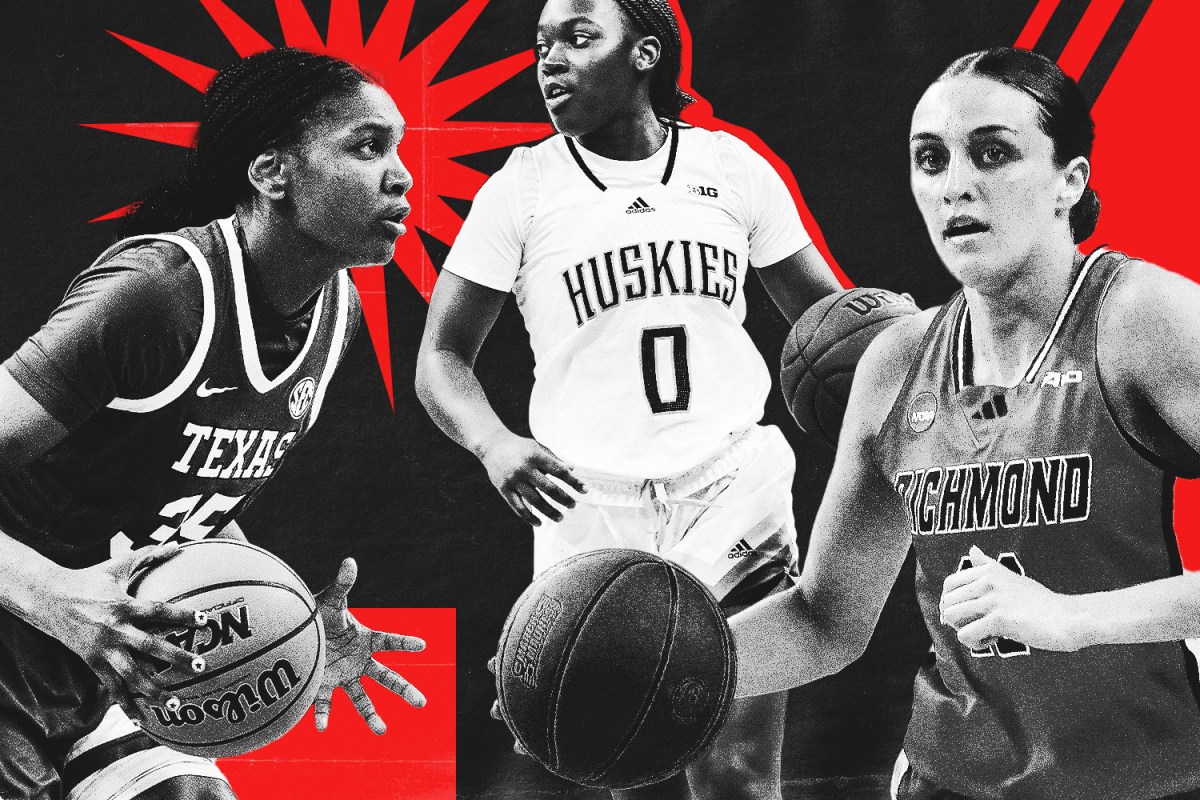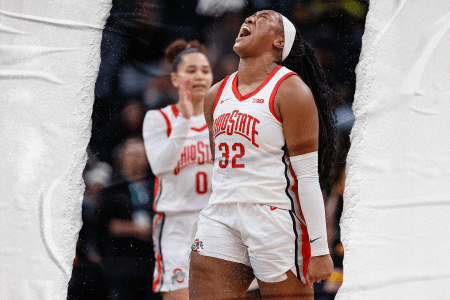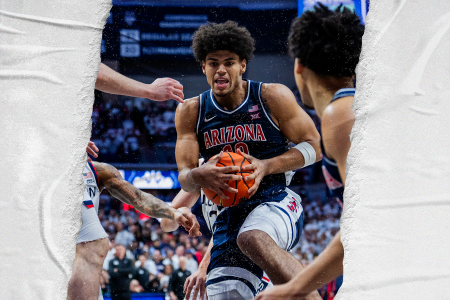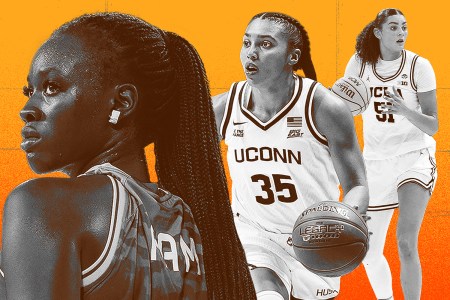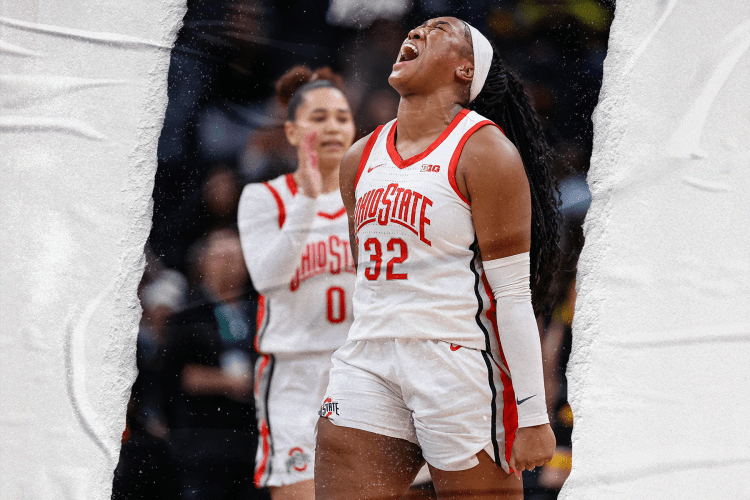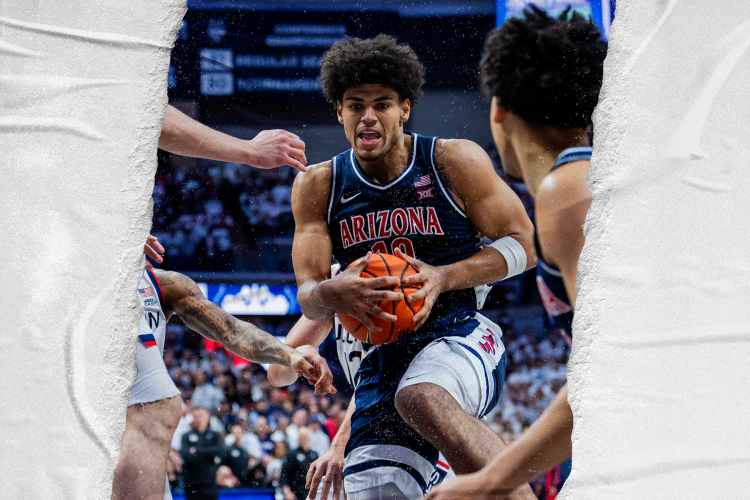Kevin Clancy, who joined HHQ in 2025, has worked in women’s basketball since 2012, contributing at the NCAA DI, DII, junior college, and high school levels as a coach, trainer, consultant, evaluator and writer. Kevin can be reached at Kevin Clancy (@TheOneKevClancy) / X.
The 2025-26 college basketball season is fast approaching for both the men and women. Over the last two weeks, Hoops HQ rolled out our top 100 men’s players. Today, we bring part one of our ranking of the top 25 women.
The score you see assigned to each player is the result of a unique mathematical analysis from the great Bart Torvik, which gives added weight to percentages over traditional numeric stats like points, rebounds, assists, etc. For instance, if a player is on the floor for 10 missed shots by the opposing team and corralled two of those defensive rebounds, her Defensive Rebound Rate would be 2/10, or 20 percent. These percentages go into calculating a player’s overall score. The highest on record was Caitlin Clark in 2023-24 with an 11.1, for reference. The benefit of this calculus is that it reveals which players make the most of their minutes on the floor.
To be considered the best, you have to be at your best against the best, which is why our HHQ Rating only accounts for games against Top 50 opponents. Each player had to play a minimum of five games against top-50 competition last season to be considered.
25. Khamil Pierre, 6-foot-2 junior forward, NC State (HHQ Rating: 5.8)
Pierre transfers to Raleigh from Vanderbilt, where she was a driving force on the resurgent Commodores. The 6-foot-2 sophomore was an absolute terror on the glass, with an 8.8-percent offensive-rebounding rate and a 20.5-percent defensive-rebounding rate. The pairing of Pierre with 6-foot-6 Tilda Trygger will shore up the defensive end for the Wolfpack, giving them a lethal one-two punch inside for the next two seasons.

24. Payton Verhulst, 6-foot-1 redshirt senior guard, Oklahoma (HHQ Rating: 5.9)
The Sooner sharpshooter returns for her fifth season of college basketball, and head coach Jennie Baranczyk couldn’t be more thrilled. Verhulst shot 44 of 125 (35.2 percent) from three-point range, while maintaining a 1.5 assist-turnover ratio in 16 contests vs. top 50 opponents. In 2025-26, the 6-foot-1 guard will get even more open looks with No. 1-ranked freshman Aaliyah Chavez running the show.
23. Zoe Brooks, 5-foot-10 junior guard, NC State (HHQ Rating: 5.9)
Brooks might have been overshadowed at times by a roster loaded with seniors in 2024-25, but she saved her best for the elite competition. The 5-foot-10 sophomore guard was solid with the ball in her hands, maintaining a 1.5 assist-turnover ratio. Perhaps the most impressive aspect about her 48.1-percent effective field-goal rate was Brooks shooting 43.5 percent on long twos and 50 percent on all twos.
22. Nunu Agara, 6-foot-2 junior forward, Stanford (HHQ Rating: 5.9)
For anyone who isn’t on the West Coast, Nunu Agara might be the best player you’ve never heard of. She shot 8 of 18 from three (44.4 percent), 39 of 45 from the free-throw line (86.7 percent), had an 8.7-percent o-reb rate, and a 21.7-percent d-reb rate. With a free-throw rate of 33.1 percent, she was able to create points through her aggressiveness. Agara was the most productive player on Stanford’s roster a season ago, despite missing six of the final nine games due to injury. If the Cardinal hope to make a run in the ACC, she will have to perform up to this ranking.
21. Syla Swords, 6-foot sophomore guard, Michigan (HHQ Rating: 6.0)
Swords immediately announced herself as a star on Nov. 4, 2024 against No. 1-ranked South Carolina, and the party is still going strong. After dropping 27 points on the Gamecocks in her first collegiate game, the 6-foot guard continued to feast on opposing top-50 teams, shooting 51 of 133 (38.3 percent) from three on her way to a 50.3-percent eFG%. As someone who was solid in nearly all statistical categories as a true freshman, it is expected that Swords will take a major leap this season for the Wolverines, who are hoping to reach their third Sweet Sixteen in program history.
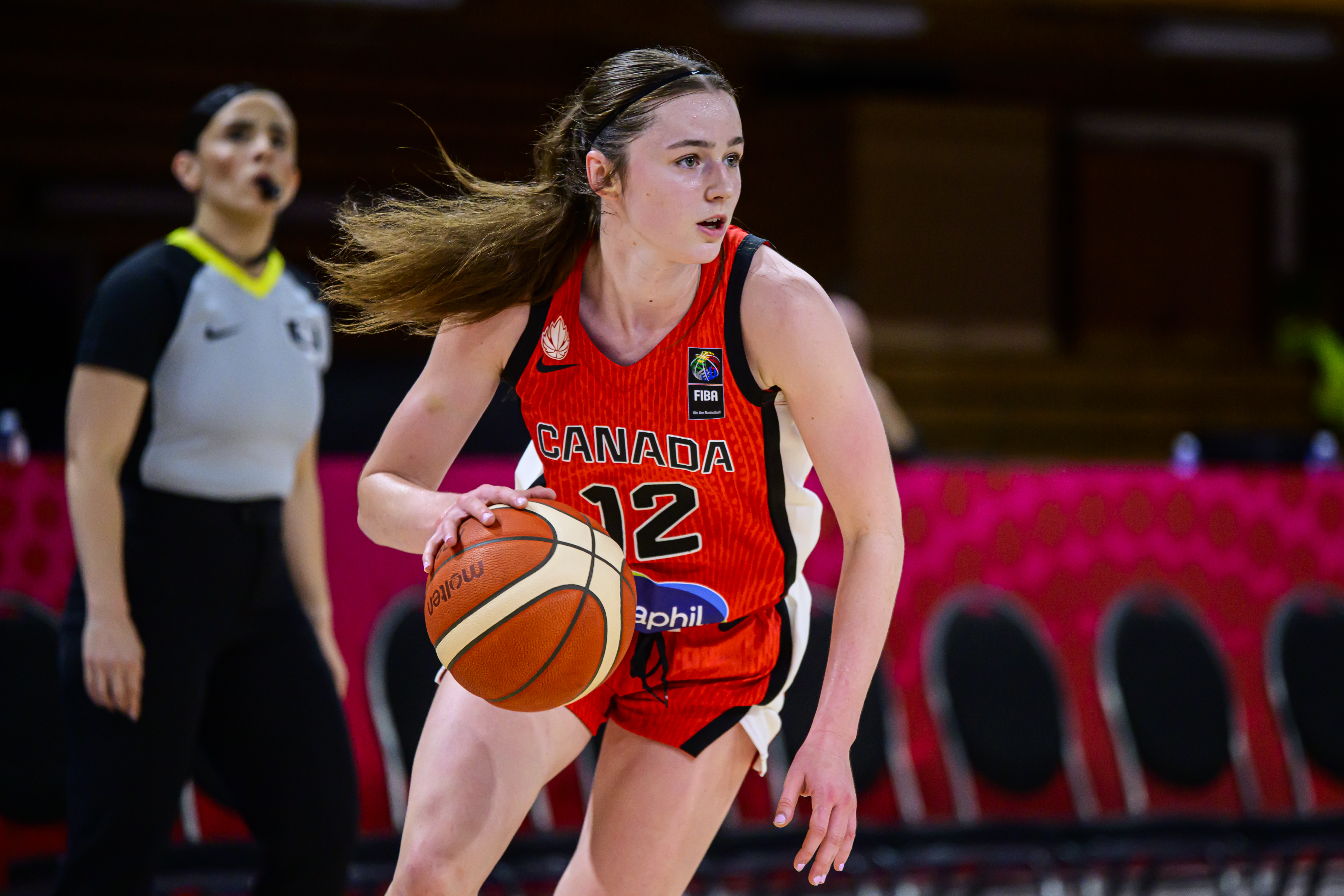
20. Elle Ladine, 5-foot-11 senior guard, Washington (HHQ Rating: 6.0)
Ladine can flat out score the ball, and she does so efficiently. In 18 games against top-50 competition, she shot 37 of 96 (38.5 percent) from three, 75 of 150 (50.0 percent) from two, and 28 of 34 (82.4 percent) from the free-throw line. Even more impressively, the Husky did this while maintaining a usage rate of 25.8 percent. If Ladine can continue to score at will while holding her own defensively and on the glass, she could be in for her most impactful season yet.
Women’s College Basketball Preseason Top 25: Who Can Stop UConn?
With the 2025 – 2026 season about to start, the Huskies look as dominant as ever. Here, Hoops HQ’s Top 25.
19. Carys Baker, 6-foot-2 junior forward, Virginia Tech (HHQ Rating: 6.1)
Baker is an elite scorer who takes care of the ball and collects defensive rebounds. While labeled by many as simply a three-point threat, the 6-foot-2 sophomore showed her offensive versatility, utilizing post-ups and midrange in addition to the perimeter shooting. Baker shot 15 of 41 from three (39.0 percent) and 34 of 63 from two (54.0 percent) in 11 matchups against top-50 opponents. Additionally, Baker had a 1.4 assist-turnover ratio and defensive-rebound rate of 15.9 percent in such games. Her usage rate will surely rise from 15.8 percent in 2025-26, and if she produces at the same levels or greater, the Hokies have a chance to be dangerous.
18. Olivia Miles, 5-foot-10 graduate student guard, TCU (HHQ Rating: 6.3)
The Notre Dame transfer enters her first season in Fort Worth, and expectations are understandably high. The fifth-year senior has shown she can contribute offensively in a variety of ways; it’s one thing to have a 53.8-percent eFG% in 18 games against top-50 competition (35 of 89 from two, 54 of 109 from three), but it’s a different level to have an accompanying assist rate of 23.5 percent, along with a 1.7 assist-turnover ratio.
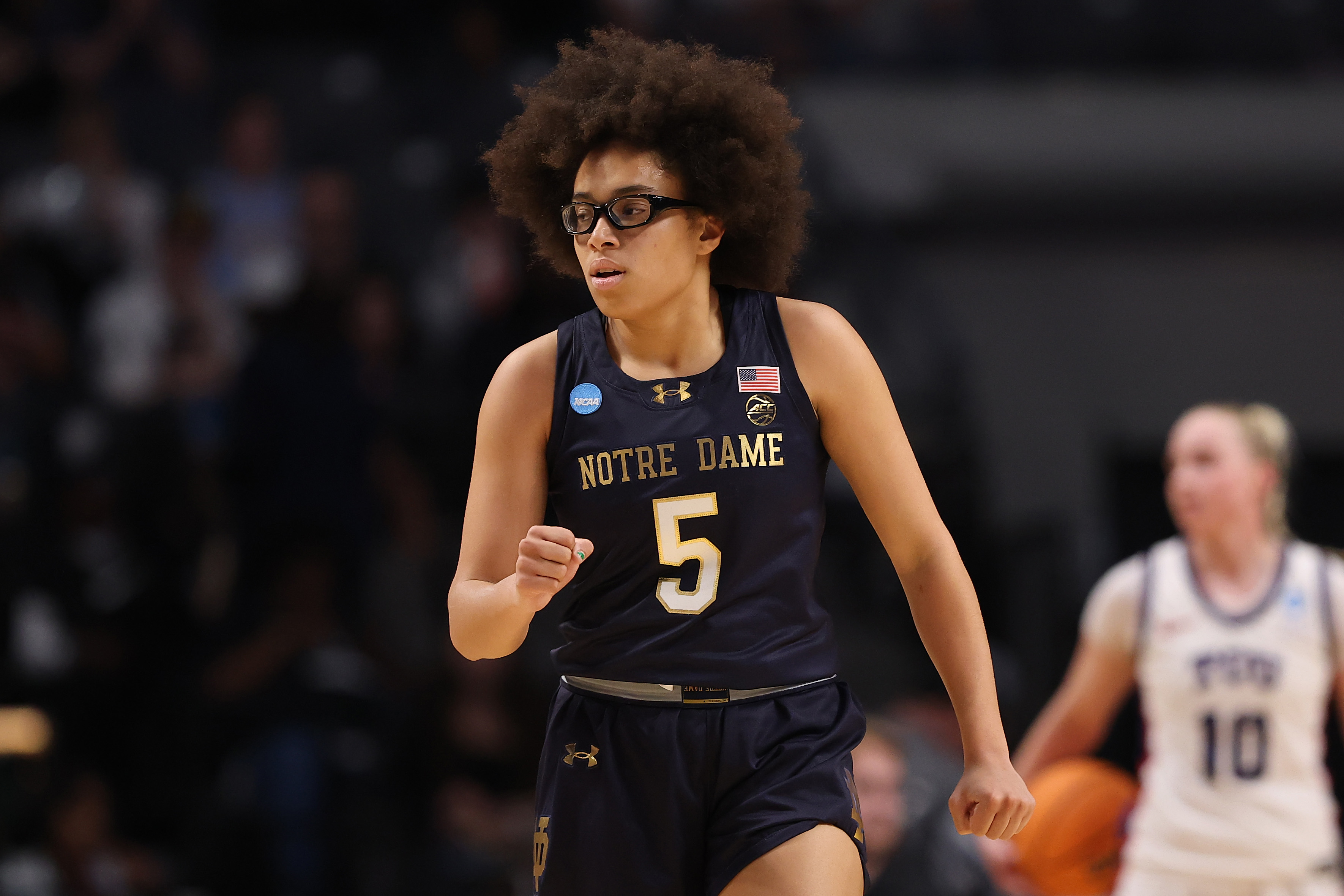
17. Tonie Morgan, 5-foot-9 senior guard, Kentucky (HHQ Rating: 6.3)
The Georgia Tech transfer point guard comes to Lexington ready to fill a huge void left by outgoing Georgia Amoore. In her junior campaign, Morgan posted a remarkable 32.0-percent assist rate accompanied by a 1.8 assist-turnover ratio. She also held her own on the defensive glass, with a defensive-rebound rate of 13.9 percent. If Morgan can lock up opposing guards, facilitate Kentucky’s wealth of scorers and box out effectively on the defensive end, the Wildcats could be primed for the Sweet Sixteen run that narrowly eluded them in 2024-25.
16. Brooklyn Meyer, 6-foot-2 senior forward, South Dakota State (HHQ Rating: 6.4)
Meyer is one of three mid-major players on this list, and for good reason. In seven games against top-50 competition, the 6-foot-2 junior put up an astronomical true shooting percentage of 60.7 (1 of 1 from three, 44 of 79 from two, 20 of 26 from the free-throw line). She also posted an impressive 10.3-percent offensive-rebound rate, keeping possessions alive for the Jackrabbits. Meyer’s usage rate was 26.9 percent, and it may need to be even higher for South Dakota State to knock off elite-caliber opponents.
15. Kaylene Smikle, 6-foot senior guard, Maryland (HHQ Rating: 6.4)
In two seasons at Rutgers, Smikle saved her best basketball for the elite competition, as her productivity actually increased against top-50 opponents. When she moved to Maryland in 2024-25, that trend persisted; Smikle was solid across the board with a high usage rate (28.9 percent), including a true shooting percentage of 53.0 percent on 124 free-throw attempts and 270 field-goal attempts. Her defense should also be noted, with a 2.7-percent steal rate. The Terrapins surely hope that after a season in College Park, her performance will continue to improve in 2025-26.
14. Sayvia Sellers, 5-foot-7 junior guard, Washington (HHQ Rating: 6.6)
Sellers broke out in her sophomore season in Seattle, posting an effective field-goal rate of 51.1 percent in 18 games vs top-50 competition. This included shooting 41 of 114 (36.0 percent) from three, as well as 76 of 155 (49.0 percent) from two. In addition, she had active hands defensively, putting together an elite 3.3-percent steal rate. The 5-foot-7 guard was also a facilitator, with a 22.7-percent assist rate and 1.1 assist-turnover ratio. Now an upperclassman, it will be intriguing to see what kind of leap Sellers takes this season.

13. Rachel Ullstrom, 6-foot-1 senior guard, Richmond (HHQ Rating: 6.7)
Ullstrom was a major catalyst for Richmond, which finished 28-7 last season and won an NCAA Tournament game. Her best stretch came in seven games against top-50 competition, where she posted a mind-boggling 62.5-percent eFG%, including shooting 14 of 33 (42.4 percent) from three and 29 of 47 (61.7 percent) from two. Holding her own in all other categories, Ullstrom deserves to be on this list, and deserves a higher usage rate than her mark of 20.7 percent in 2024-25.
12. Mikaylah Williams, 6-foot junior guard, LSU (HHQ Rating: 7.0)
On a roster crowded with stars, it feels like Williams doesn’t get the national attention she deserves. However, her production versus elite competition speaks for itself. Williams is a legitimate three-level scorer who can distribute while taking care of the ball. In 17 games against top-50 teams, Williams posted a 52.5-percent effective field-goal rate, notably shooting 34 of 86 (39.5 percent) from three-point range.
11. Madison Booker, 6-foot-1 junior forward, Texas (HHQ Rating: 7.0)
Booker was a very effective two-way player for head coach Vic Schaefer last season, but more impressive than her defense (3.0-percent steal rate) may have been her rebounding. Booker posted a defensive-rebounding rate of 18.8 percent in 22 games vs. top-50 competition, helping the Longhorns advance to their first Final Four since 2003.

